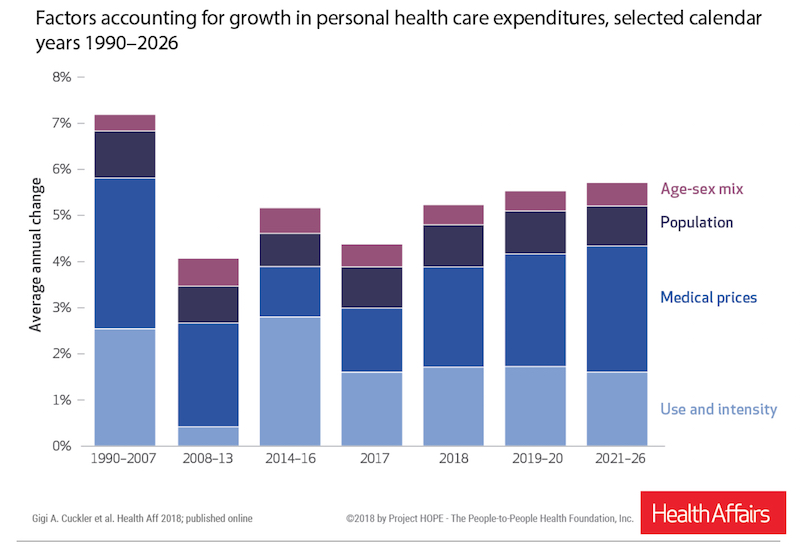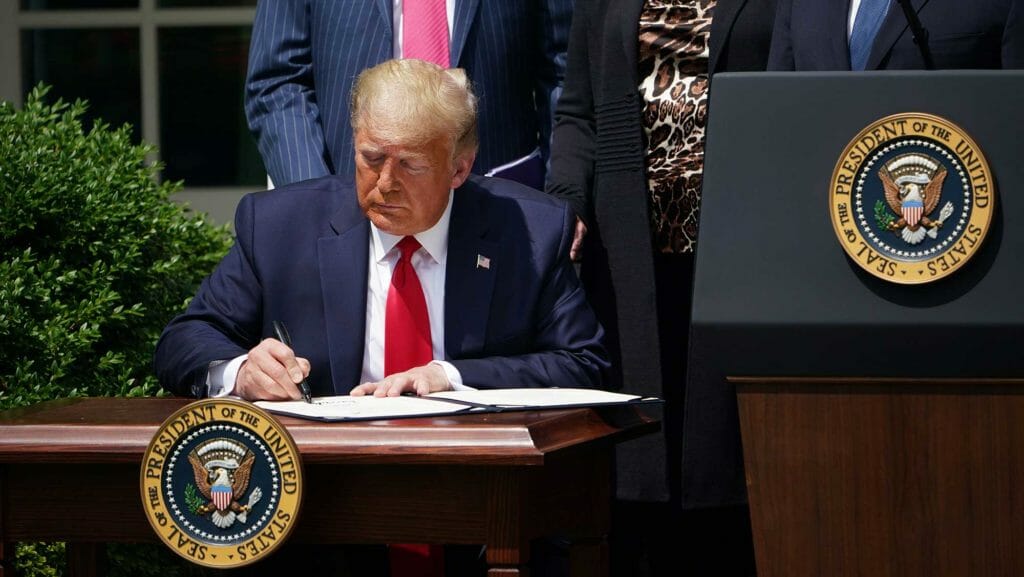
Nursing care facilities and continuing care retirement communities Projected national expenditures related to nursing care facilities and continuing care retirement communities, according to new estimates released Wednesday by the Office of the Actuary at the Centers for Medicare & Medicaid Services, will be $174.6 billion in 2018, $191.9 billion in 2020 and $261 billion in 2026. Annual growth from the previous year will be 3.9% in 2018, 4.8% in 2020 and 5.3% in 2026, according to CMS. |
Changes in projected income growth and enrollment shifts from private health insurance to Medicare as baby boomers continue to age into the program will drive average annual growth of 5.5% in national health spending and enrollment from 2017 to 2026, according to new estimates released Wednesday by the Office of the Actuary at the Centers for Medicare & Medicaid Services.
“While this projected average annual growth rate is more modest than the 7.3 percent rate observed over the longer-term history before the last recession (1990–2007), it is more rapid than had been experienced in 2008–16 (4.2 percent),” the researchers wrote in an article published online in Health Affairs.
National health spending will outpace average projected growth in gross domestic product by one percentage point, the study authors said. As a result, the health share of the economy is projected to increase to 19.7% by 2026, up from 17.9% in 2016.
CMS based the estimates on current law.
“As we’re going through all these projections, it’s very clear that the aging of the population has a significant influence on Medicare enrollment and shifts out of private health insurance,” Gigi A. Cuckler, an economist in the CMS Office of the Actuary, said Wednesday during a call with members of the media. “It’s also very clear that as you go through these projections, the growth in income and in particular, disposable personal income, has a substantial influence on, particularly, projected private health insurance and out-of-pocket spending.”
John Poisal, a deputy director of the National Health Statistics Group in CMS’ Office of the Actuary, told reporters that of the 5.5% average annual growth in national health spending expected from 2017 to 2026, approximately half of a percentage point will be due to the age and sex mix of the population, 2.5 percentage points will be due to medical costs, 1.7 percentage points will be related to use and intensity of care, and 0.9 percentage points will be due to population growth. (See chart below.)
When looked at from this perspective, age accounts for a smaller percentage of growth than the other factors, Cuckler said, “because, as you have continuing of the Baby Boom generation entering Medicare, you have relatively younger and healthier folks entering into the program in increasing numbers. And so what that does is, it tends to dampen the growth in Medicare spending per enrollee, so on net, you have that relatively smaller effect of less than a half a percentage point compared to the other effects.
“But from an enrollment perspective,” she continued, “people shifting into Medicare and out of private health insurance from the aging of the population results in, on average, just under three percentage points per year in enrollment growth in the Medicare program. So from that standpoint, you do see enrollment growth from the aging of the population contributing to Medicare spending growth.”




